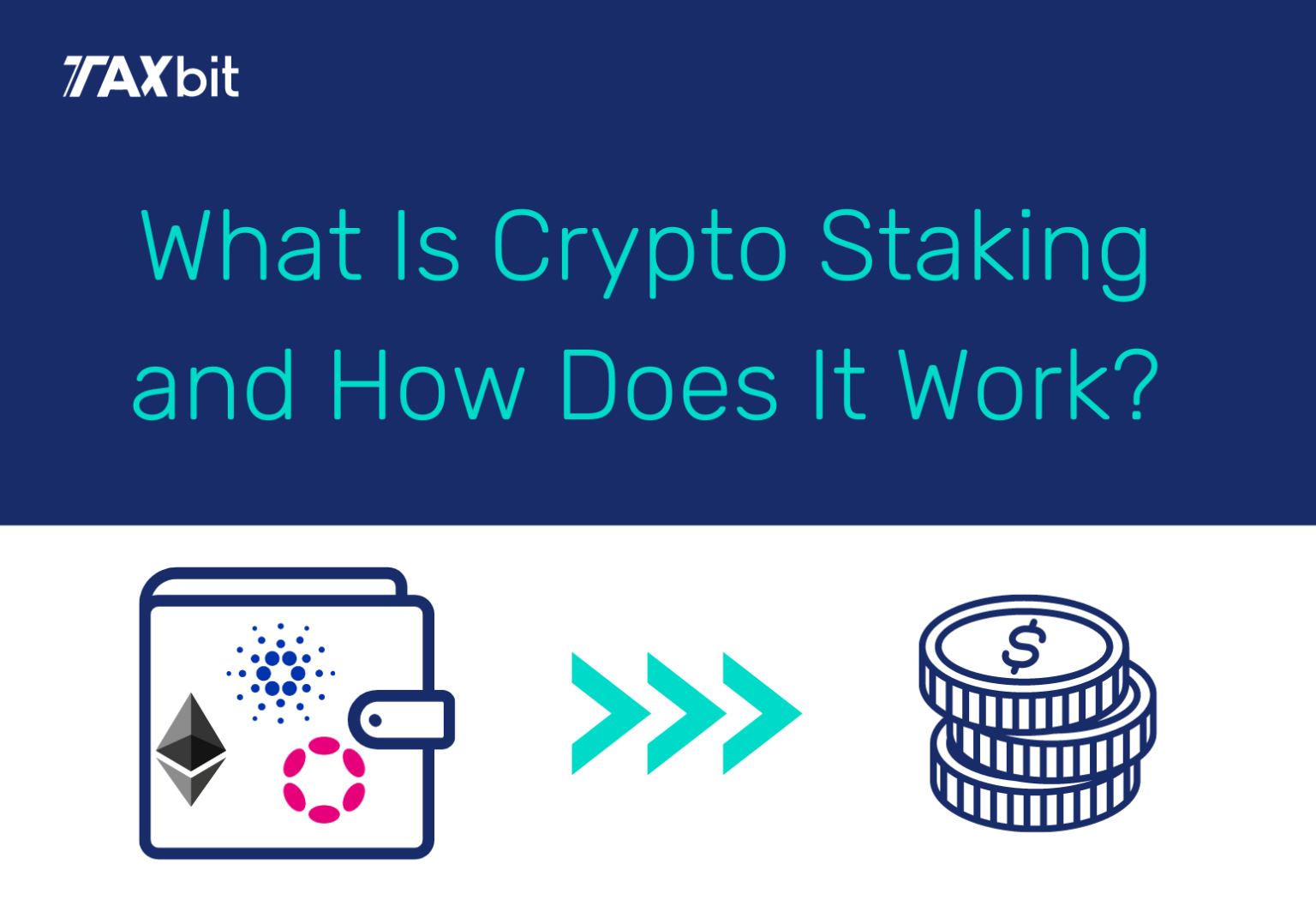Crypto staking lets investors generate potential rewards and interest on their investments. Learn more about the requirements.
Crypto staking is a way for cryptocurrency users to passively generate rewards for owning crypto. If you have crypto that is the native coin on a proof-of-stake blockchain and wants to increase your holdings, staking could be one strategy that will allow you to steadily increase your holdings.
What is crypto staking?
Crypto staking is the process of temporarily locking cryptocurrency units in a specified wallet to activate the software and become a validator for that blockchain. Validators offer input on the true state of transaction history and records in addition to creating new blocks, and rewards are given in the form of newly-minted coins in exchange for helping to secure the network.
Staking cryptocurrency is an essential part of maintaining a proof-of-stake (PoS) blockchain like Ethereum 2.0. It’s similar to mining in proof-of-work (PoW) blockchains like Bitcoin. Both processes serve as a consensus mechanism to validate transactions on their respective blockchains.
PoS networks rely on the economic incentive of a user’s staked funds to efficiently provide network security as opposed to the processing power used in PoW.
Since PoS requires far less energy and leaves a smaller carbon footprint, it’s considered an environmentally-friendly alternative to its PoW counterpart.
How does crypto staking work?
There are two general ways to stake your crypto:
- Independent Staking. You become an independent validator and stake your assets directly. Thus, you will receive all the rewards.
- Staking pools. You and other crypto investors lock up your funds together. You aren’t a direct validator, but you delegate your coins to a pool and receive a portion of the staking rewards minus the pool’s fees.
Requirements
Proof-of-stake blockchains require an investor to own a minimum amount of crypto units to become a validator and stake independently. Ethereum is a well-known example. To stake Ethereum independently, you need to own at least 32 ether (ETH), which is a significant barrier to entry.
Staking pools tend to require platform fees, which will reduce your returns slightly.
For example, if you have 3 ETH worth $10,000, you don’t have enough to become a validator yourself. You can lock up your ETH in Ankr, a staking pool, for six months. The platform offers a 5% annual yield net of fees.
Over the next six months, you could accumulate crypto rewards of 0.075 ETH worth $250. At that point, you can continue to stake your funds and earn rewards or withdraw the funds to access your earnings.
Is crypto staking profitable?
Crypto staking could be a potentially lucrative opportunity for many crypto investors.
A decent staking yield on your cryptocurrency could add up quickly. For example, if you were to stake 5,000 Cardano (ADA) worth $10,000 and receive 6% APY, you’d earn roughly $1,236 worth of ADA over the next two years.
If you intend to buy and hold a digital asset long-term, it could make sense to take advantage of staking returns.
Can you lose money staking crypto?
Crypto staking can be a great way to increase your crypto holdings with minimal effort, but with every investment strategy, there’s a risk of loss.
Some of the most significant risks are:
- Market risk. One of the primary drawbacks to staking your crypto is the potential lockup period. You can’t sell your crypto during this time, but you’re still vulnerable to drops in the price. If you stake a coin to get a 6% yield, but the value drops by 30%, you’ll have a significant loss.
- Liquidity risk. If you stake digital assets with less liquidity, you may have difficulty selling them, which could prevent you from accessing your staking profits.
What are some top-staking coins?
Staking isn’t possible with every cryptocurrency. Remember, you’re serving as a validator for a PoS blockchain.
As a result, staking isn’t possible for cryptocurrencies on PoW blockchains; for example, you aren’t able to stake Bitcoin.
Some of the most popular cryptocurrencies you can stake are:
- Ether (ETH)
- Cardano (ADA)
- Polkadot (DOT)
Ether (ETH)
Ether is the cryptocurrency for Ethereum, a popular foundational blockchain for most decentralized finance (DeFi) transactions.
Since the release of the ETH2 upgrades to the Ethereum blockchain, crypto investors can become validators and stake their ETH to receive rewards. To do so, you must own at least 32 ETH. When Ethereum migrated to a proof-of-stake blockchain in the Fall of 2022, validators were not initially able to access their staked ETH or the associated rewards, But since the Spring of 2023, since the Shanghai upgrade to Ethereum, validators have been able to access and remove their staked ETH and the associated rewards.
Currently, staking yields range between 4.9% to 5.5% depending on whether you stake as part of a pool or individually.
Cardanoa (ADA)
Cardano is a PoS blockchain network with a native cryptocurrency called ADA. One of the main selling points of staking ADA is Cardano’s lack of a lockup period.
Currently, staking yields range between 3.1% to 4.5% depending on whether you delegate your units to a validator or validate individually.
Polkadot (DOT)
Gavin Wood, one of Ethereum’s co-founders, launched the Polkadot blockchain in 2017. Its primary selling point is that it facilitates cross-chain communication. Data and tokens can be transferred across public, open, permissionless blockchains as well as private, permissioned blockchains.
Staking Polkadot’s native token is a potentially attractive opportunity because of its unusually high yield. Currently, staking yields range between 14.6% to 15.6% depending on whether you delegate your units to a validator or validate individually.
How do you start crypto staking?
o start staking crypto, you’ll need to choose a cryptocurrency that is part of a PoS blockchain.
Next, prepare a crypto wallet to store the asset. Alternatively, you can work with a centralized platform that supports staking, such as Coinbase or Gemini.
If you anticipate staking individually – running a validation node yourself – you will need to ensure your node stays online continuously so it can perform validation tasks when it is required to do so. If you stake through a service or delegate to another user running a validation node, you do not need to worry about being constantly connected.
At this point, you can acquire the asset you wish to stake. Make sure you meet the minimum quantity necessary to stake that asset.
Then, visit the platform of the cryptocurrency you wish to stake or the centralized crypto exchange you’re using to begin.
How is crypto staking taxed?
In July 2023, the IRS issued guidance articulating its position on the tax treatment of newly-minted (reward) coins received from validating transactions.
IRS Revenue Ruling 2023-14 states that crypto units received from validating transactions on a proof-of-stake network are includable in gross income at the time the user has control over those assets – meaning when the user can sell, exchange, or transfer the units.
For tax purposes, the units are included as income at the fair market value of those units when the user obtains control over them
It should be noted that the inclusion of the value in income will also establish a cost basis in received units. That cost basis will be used to calculate any gain or loss if the units are sold or disposed of in the future.
Rev. Rul. 2023-14 treats staking rewards in the same manner that the IRS has long viewed the treatment of newly-minted rewards received from validating transactions on a proof-of-work blockchain – a process known as mining. In Notice 2014-21, the IRS stated that mining rewards are also included as income upon receipt.
As noted above, the inclusion of the value of the new units in income establishes a cost basis in those units. If, at a later date, you sell or dispose of the crypto received as a staking reward, you’ll owe capital gains tax on any increase in value. Any gain (or loss) will be calculated based on the value at the time of the disposal measured against the cost basis on the units. The gains will be short-term or long-term, depending on whether your holding period is less than or greater than a year. Short-term gains are subject to ordinary income taxes, while long-term gains receive discounted rates.
For example, say you have 5 ETH worth $20,000. You stake the assets in a staking pool that pays 7% APY net of fees. That year, you generate .5 ETH resulting in an income of $1,450, and then take your assets out of the pool.
After six months, you decide to sell your .5 ETH when its value has gone up to $1,800.
Under this scenario, you should include the original staking reward – the sum of $1,450 – in your gross income for the year. That income would be taxable at ordinary tax rates, similar to how wages are taxed.
Separately, you have a $350 capital gain for the increase in value of the .5 ETH prior to the sale – $1,800 minus $1,450. Because your holding period was less than a year, it’s also subject to ordinary income tax rates.
How Taxbit can help
Keeping up with all the paperwork and reporting regulations for digital asset transactions can be laborious and time-consuming. The more complex your crypto portfolio becomes, the more complicated your tax liabilities can get.
Taxbit helps track your crypto transactions and fill out your tax forms automatically.
To learn more about managing your crypto tax liabilities and reporting requirements, read our Guides:
- Cryptocurrency Tax Guide
- Cryptocurrency Trading Tax-loss Harvesting Guide
- NFT Tax Guide: What Creators and Investors Need to Know About NFT Taxes
.png)


